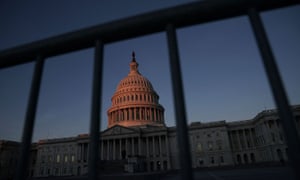The Guardian - Back to home
Science institute that advised EU and UN 'actually industry lobby group'
International Life Sciences Institute used by corporate backers to counter public health policies, says study
 In an email to Coca-Cola and Monsanto executives, ILSI founder, Alex Malaspina, wrote that new US dietary guidelines required they ‘consider how to become ready to mount a strong defence’. Photograph: MKucova/Getty/iStockphoto
In an email to Coca-Cola and Monsanto executives, ILSI founder, Alex Malaspina, wrote that new US dietary guidelines required they ‘consider how to become ready to mount a strong defence’. Photograph: MKucova/Getty/iStockphotoArthur Neslen
Mon 3 Jun 2019 03.00 BST
An institute whose experts have occupied key positions on EU and UN regulatory panels is, in reality, an industry lobby group that masquerades as a scientific health charity, according to a peer-reviewed study.
The Washington-based International Life Sciences Institute (ILSI) describes its mission as “pursuing objectivity, clarity and reproducibility” to “benefit the public good”.
But researchers from the University of Cambridge, Bocconi University in Milan, and the US Right to Know campaign assessed over 17,000 pages of documents under US freedom of information laws to present evidence of influence-peddling.
The paper’s lead author, Dr Sarah Steele, a Cambridge university senior research associate, said:
“Our findings add to the evidence that this nonprofit organisation has been used by its corporate backers for years to counter public health policies. ILSI should be regarded as an industry group – a private body – and regulated as such, not as a body acting for the greater good.”
In a 2015 email copied to ILSI’s then director, Suzanne Harris, and executives from firms such as Coca-Cola and Monsanto, ILSI’s founder Alex Malaspina, a former Coca-Cola vice-president, complained bitterly about new US dietary guidelines for reducing sugar intake.
“These guidelines are a real disaster!” he wrote. “They could eventually affect us significantly in many ways; Soft drink taxations, modified school luncheon programs, a strong educational effort to educate children and adults to significanty [sic] limit their sugar intake,, curtail advertising of sugary foods and beverages and eventually a great pressure from CDC [the US Center for Disease Control and Prevention] and other agencies to force industry to start deducing [sic] drastically the sugar we add to processed foods and beverages.”
Malaspina – whom Coca-Cola describes as a “longtime scientific and regulatory affairs leader” – said he expected many nations to follow the new guidelines, adding: “We have to consider how to become ready to mount a strong defence.”
According to ILSI’s declared mandatory principles, it “may not directly or indirectly propose public policy solutions or advocate the commercial interests of their member companies or other parties”.
Kristin DiNicolantonio, ILSI Global’s communication director, told the Guardian that “under no circumstance does ILSI protect industry from being affected by disadvantageous policy and laws”.
The study, published on Monday in the journal Globalization and Health, found that when ILSI’s regional offices failed to promote industry-friendly messaging, they were subjected to sanctions.
In another email from 2015, Malaspina wrote: “About the mess ILSI Mexico is in because they sponsored in September a sweeteners conference when the subject of soft drinks taxation was discussed. ILSI is now suspending ILSI Mexico, until they correct their ways. A real mess.”
Malaspina added that “I hope we have now reached bottom [sic] and eventually we will recover as [far as] Coke and ILSI are concerned.”
ILSI says its Mexican affiliate was suspended for “engaging in activities that can be construed to be policy advocacy”.
Around this time, ILSI was caught up in a separate controversy, when the Guardian revealed that ILSI Europe’s vice-president Prof Alan Boobis chaired a UN panel that found glyphosate was probably not carcinogenic to humans.
The final panel report included no conflict of interest statements, even though ILSI Europe had received donations of $500,000 (£344,234) fromMonsanto, which uses glyphosate in its RoundUp weedkiller, and $528,500 from its industry representative, Croplife International.
Corporate figures from companies including Monsanto, Kraft and Nestlé have sat on ILSI’s board, although DiNicolantonio said they did so “in an individual capacity”.
In 2012, the European parliament suspended funding to the European Food Safety Authority (Efsa) for six months over a string of conflicts of interest allegations involving ILSI members on its own board. A separate parliamentary inquiry into the group in 2017 contributed to new EU transparency rules.
The food group Mars last year announced that it would break its ties with ILSI, whose work it described as “advocacy-led”.
But former and current ILSI officials continue to play key roles in the EU’s science advisory mechanism, which recently produced a report that recommends a slew of industry positions on pesticides. These would, for example, replace current rules outlawing any products that could harm human health with a US-style concept of “acceptable risk”.
A similar Efsa approach, the Threshold for Toxicological Concern published earlier this year, emerged from a working group in which the majority of experts had formal links to ILSI, according to the Pesticides Action Network Europe (PAN-E). The new threshold would allow “safe levels of exposure” for many chemicals which have not been fully tested for toxicity.
PAN-E alleges that eight of the 12 EU pesticides risk assessments that it studied had their regulatory use “designed and/or promoted” by the industry.
Over the course of 2015, a World Health Organization (WHO) move to distance itself from ILSI due to links between one of its members and the tobacco industryprovoked a degree of internal anxiety in ILSI, according to the new study.
One email exchange between the University of Washington’s Prof Adam Drewnowski and Malaspina led to suggestions of a direct approach to the WHO director, Margaret Chan.
Drewnowski wrote that Chan had “said that she was ready to be ‘at the table – but not in bed – with industry’ (her own phrase). Since then, her position has hardened considerably. We should remind her of her own phrase and get her to the table.”
Malaspina later sent an email to senior ILSI and Coca-Cola officials, saying: “We must find a way of someone such as a famous scientist arrange to pay her [Chan] a visit. Jim Hill or someone of similar stature or a US government scientist.”
If a dialogue could not be started, Chan “will continue to blast us with significant negative consequences on a global basis”, he continued. “This threat to our business is serious.”
In another email to Barbara Bowman, then the director of the CDC’s Division for Heart Disease and Stroke Prevention, Malaspina complained that the WHO “now do not want to work with industry [but] who finds all the new drugs. Not WHO, but industry. She is influenced by the Chinese govt and is against US. Something must be done.”
In emailed comments, DiNicolantonio said that any suggestion that ILSI had attempted to influence Chan over sugar-sweetened products was “unfounded and inaccurate”.
